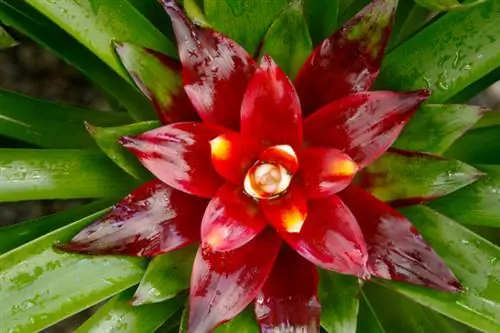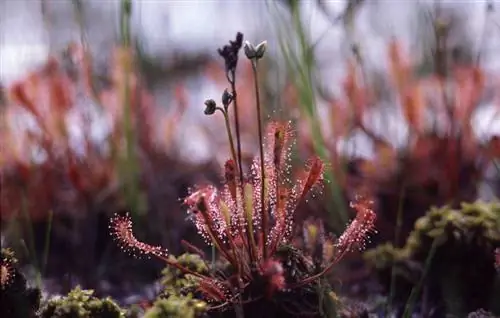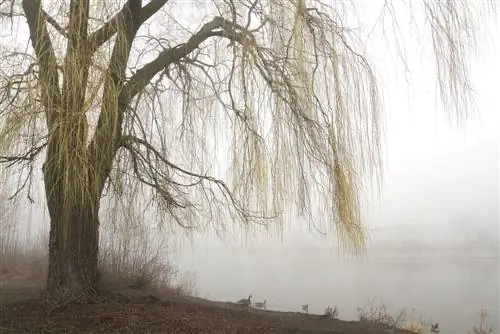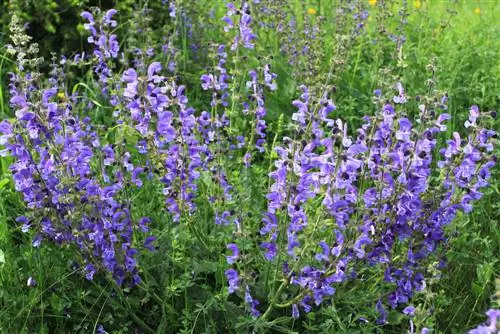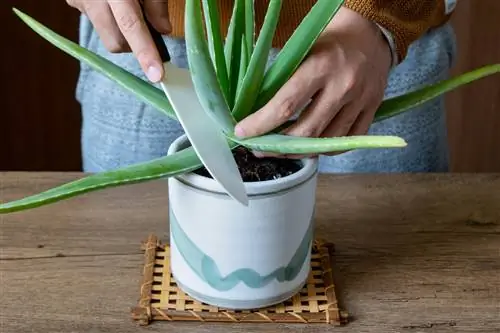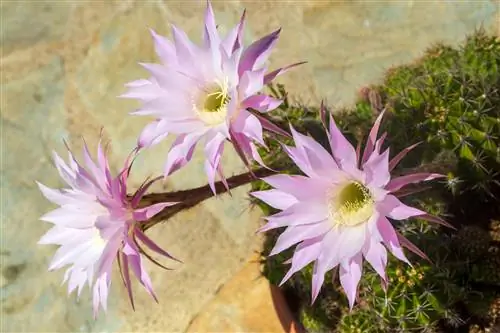- Author admin [email protected].
- Public 2023-12-16 16:46.
- Last modified 2025-01-23 11:20.
The rather inconspicuous flowers of a bromeliad are surrounded by colorful bracts. With this tactic, the tropical beauty magically attracts potential pollinators and at the same time presents itself as a magnificent houseplant. A bromeliad only accomplishes this feat once in its life. However, it would be premature to dispose of the ornamental plant immediately after it has flowered. Read here how to properly deal with a wilted bromeliad.
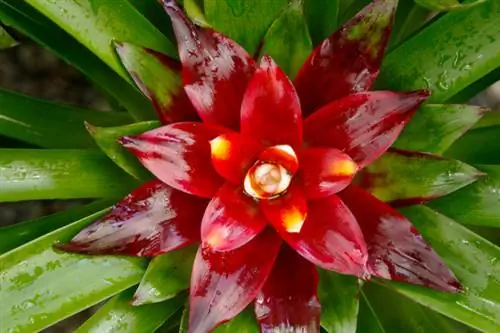
What happens after a bromeliad blooms?
After a bromeliad has flowered, small offshoots called kindles appear at its base. Continue to care for the wilted bromeliad and separate the children as soon as they have reached a height of at least 10 cm and have their own roots.
Patient care is rewarded with vital children
At the end of its flowering period, the bromeliad has a surprise in store for its gardener. At the base, offspring sprout as mini-sized bromeliads. Therefore, do not throw away a wilted plant, but continue to care for it unchanged. Until a child is viable as an independent bromeliad, the supply from the mother plant should be ensured. The following procedure has proven itself well in practice:
- Continue to water and fertilize the bromeliad in a partially shaded, warm window seat after flowering
- Do not cut off the withered flower
- First separate offshoots with a strong rosette of leaves, their own roots and a height of at least 10 cm
Plant a Kindel (€41.00 on Amazon) in a nursery pot with coarse-grained, lime-free bromeliad soil. Since a sparse root system has only formed in this phase, place a transparent plastic bag over the pot for a few weeks. The dead bromeliad can only be disposed of once you have separated all of the mature side shoots.
Tip
Although the bromeliad is not poisonous, its majestic decorative leaves should be treated with caution. In many species, the edges of the leaves are covered with sharp spines that can cause painful skin injuries. Please wear robust gloves when carrying out any maintenance work.

